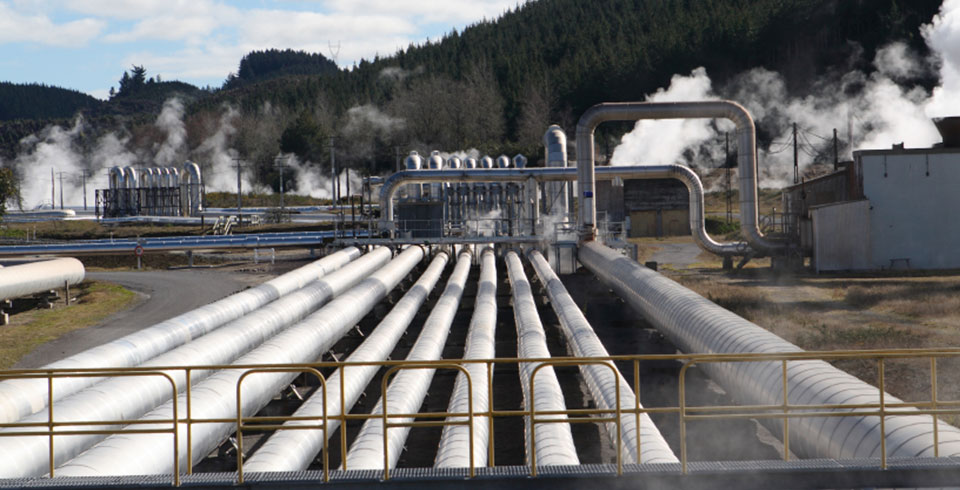
Geothermal energy is a renewable and sustainable energy source that has been harnessed for centuries, providing heat and power in various forms. As the world continues to seek cleaner alternatives to fossil fuels, geothermal energy stands out as a promising option due to its reliability and minimal environmental impact. In this article, we will explore the basics of geothermal energy, how it is generated and processed, its applications, and the pros and cons associated with its use. Additionally, we will discuss the components that play a crucial role in geothermal energy systems, such as bare copper and connectors.
What is Geothermal Energy?
Geothermal energy is derived from the natural heat stored within the Earth’s crust. This heat originates from the decay of radioactive materials, residual heat from the planet’s formation, and heat continuously produced by the Earth’s core. The temperature beneath the Earth’s surface increases with depth, providing a virtually inexhaustible source of thermal energy.
How Geothermal Energy is Generated
Geothermal energy is harnessed by tapping into geothermal reservoirs, which are areas where heat accumulates close to the Earth’s surface. These reservoirs can be found in various forms, such as hot springs, geysers, or underground reservoirs of steam and hot water. To access this energy, wells are drilled into these reservoirs to bring the hot water or steam to the surface.
Once at the surface, the geothermal fluid (steam or hot water) can be used in several ways:
- Electricity Generation: In geothermal power plants, steam from the geothermal reservoir is used to drive turbines connected to generators, producing electricity. There are different types of geothermal power plants, including dry steam, flash steam, and binary cycle plants, each suited to different types of geothermal resources.
- Direct Use Applications: Geothermal energy can also be used directly for heating buildings, agricultural applications like greenhouse heating, industrial processes, and in some cases, for recreational purposes in spas and hot springs.
- Geothermal Heat Pumps: These systems use the relatively stable temperature of the Earth near the surface to heat and cool buildings. Geothermal heat pumps are efficient and can significantly reduce energy costs for heating and cooling.
Pros and Cons of Geothermal Energy
Like any energy source, geothermal energy has its advantages and disadvantages.
Pros of Geothermal Energy
- Renewable and Sustainable: Geothermal energy is a renewable resource, as the Earth continuously produces heat. It is considered sustainable because it can provide energy for generations without depleting the resource.
- Low Emissions: Geothermal energy production has minimal greenhouse gas emissions compared to fossil fuels, making it an environmentally friendly option.
- Reliable and Consistent: Unlike solar and wind energy, geothermal energy is not dependent on weather conditions, providing a stable and continuous energy supply.
- Efficient: Geothermal power plants have a high capacity factor, meaning they can operate at maximum capacity for most of the time, making them more efficient than many other renewable energy sources.
Cons of Geothermal Energy
- High Initial Costs: The cost of drilling wells and constructing geothermal power plants can be high, making the initial investment significant.
- Location-Specific: Geothermal energy resources are not evenly distributed around the world and are often located in geologically active areas, which can limit its accessibility.
- Environmental Concerns: In some cases, the extraction of geothermal fluids can lead to the release of harmful gases, such as hydrogen sulfide. Additionally, improper management can cause land subsidence.
Components that Assist with Geothermal Energy
Several components are critical in the effective harnessing and distribution of geothermal energy. Two key components are bare copper and connectors.
Bare Copper
Bare copper is an essential material in geothermal energy systems due to its excellent thermal and electrical conductivity. It is used in various components, including electrical wiring, heat exchangers, and grounding systems. Copper’s durability and resistance to corrosion make it ideal for use in the harsh conditions associated with geothermal environments.
Connectors
Connectors play a vital role in ensuring the safety and efficiency of geothermal energy systems. They are used to link various components, such as pumps, heat exchangers, and electrical systems. High-quality connectors are essential to maintain the integrity of the system, prevent leaks, and ensure efficient energy transfer.
Conclusion
Geothermal energy is a powerful and sustainable resource that offers numerous benefits as the world seeks cleaner energy solutions. By understanding the basics of geothermal energy, how it is generated and used, and the advantages and challenges it presents, we can better appreciate its potential in the global energy landscape. While geothermal energy has its limitations, advances in technology and increasing investment in renewable energy are likely to expand its use in the coming years. The use of key components, such as bare copper and connectors, ensures that geothermal systems are efficient, reliable, and safe, contributing to the overall success of this renewable energy source.

